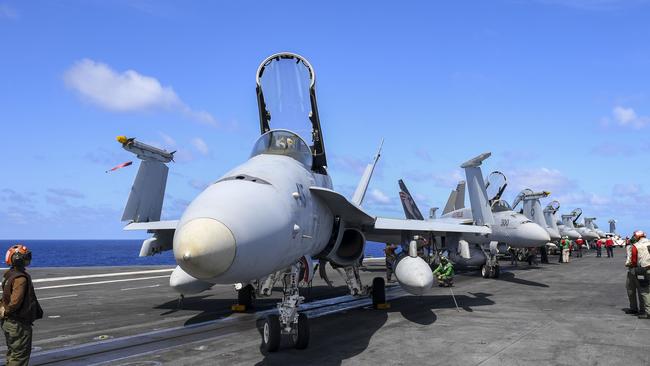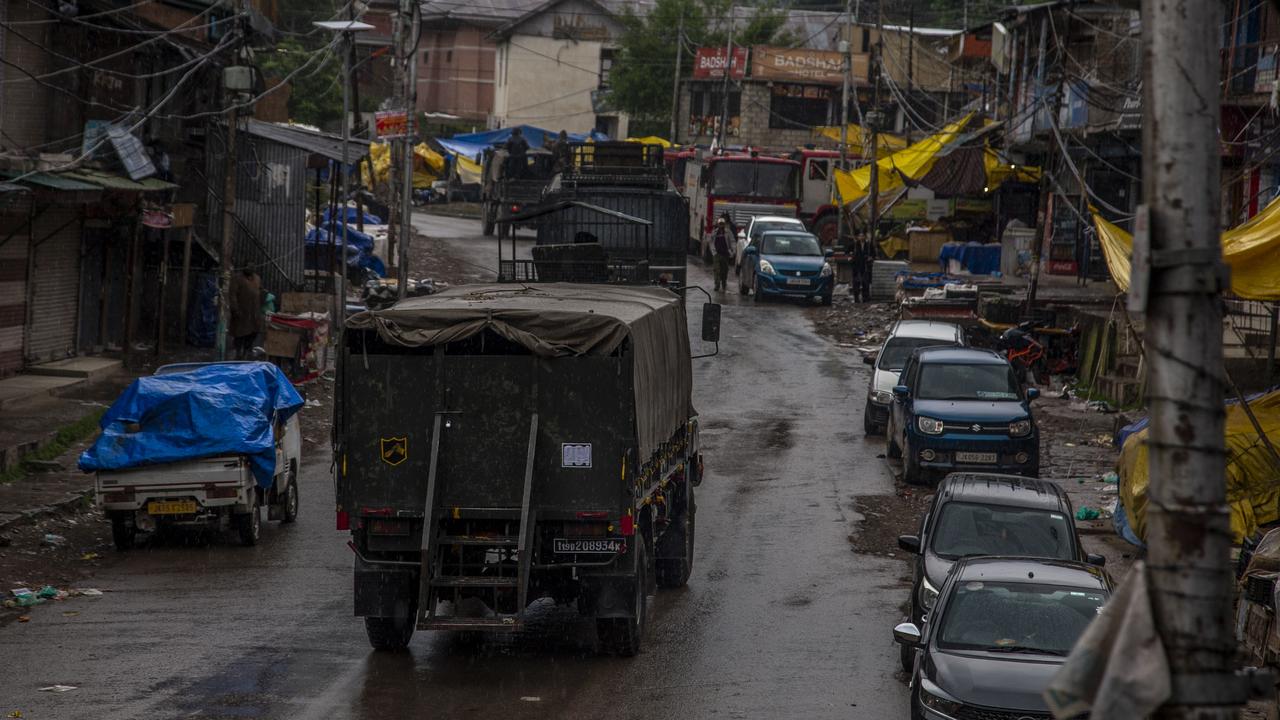US planes track China’s moves on Taiwan
The US is increasing aerial surveillance over the South China Sea to a record level as fears grow for the safety of Taiwan.

The US is increasing aerial surveillance over the South China Sea to a record level as relations between Washington and Beijing deteriorate and fears grow for the safety of Taiwan.
Spy planes from the US navy, air force and army are involved in an apparent three-pronged drive to track Chinese submarines and monitor activity by the People’s Liberation Army, which has redoubled training for operations aimed at Taiwan. In Beijing, procurement documents from the China State Shipbuilding Corporation have revealed plans to build an amphibious assault ship ideal for island invasion.
China has long considered Taiwan a breakaway province to be brought back under its control, by force if necessary, while the US has a pact with the island to ensure it has hardware and technology it needs to defend itself.
Tensions between the two superpowers have heightened in recent days, with tit-for-tat closures of consulates.
As many as 50 US patrols have been carried out this month involving a range of surveillance and signals intelligence aircraft, according to a think tank in Beijing.
The Pentagon describes such missions as “routine patrols in international airspace” but there is evidence that the number has been significantly stepped up, particularly in the strategic Bashi Channel, south of Taiwan.
The Chinese air force has also been active in recent weeks over the channel, which runs from the southern end of Taiwan to the island of Luzon in The Philippines. China has been increasing the pressure on Taiwan, launching military exercises involving amphibious warfare operations.
The US sent six reconnaissance aircraft and two refuelling tankers to the Bashi Channel this month, according to the South China Sea Probing Initiative, a think tank linked to Peking University. It said a US air force RC-135 Rivet Joint electronic surveillance aircraft entered Taiwan airspace on Monday.
A US navy EP-3E Orion reconnaissance aircraft, thought to be based in Okinawa, was also spotted on Monday flying within 100km of Guangdon province, which borders Hong Kong. US navy P-8A Poseidon anti-submarine aircraft have been part of the patrols monitoring the Bashi Channel and the South China Sea for PLA navy submarine movements.
The surveillance patrols over the South China Sea have also involved the US army’s RC-12X Guardrail signals intelligence aircraft, used for snooping on enemy communications.
The heightened US surveillance missions have coincided with a statement by Washington rejecting Beijing’s claims of sovereignty over islands in the South China Sea. The statement by Secretary of State Mike Pompeo was the first time the US had taken sides in the long-running regional dispute over the ownership of the islands. The Australian government also declared that China’s claims were unlawful.
China has been occupying some of the disputed Paracel and Spratly islands, building military facilities and converting reefs into artificial bases for runways and locations for air-defence missiles.
Two US aircraft carriers, USS Nimitz and USS Ronald Reagan, entered the South China Sea at the start of the month for rare combined training operations. The two carrier strike forces were joined by a B-52H strategic bomber from Louisiana. Last week two B-1B bombers from Andersen Air Force Base in Guam linked up with the Ronald Reagan and also flew over the South China Sea.
The US ordered China to close its consulate in Houston last week, accusing the diplomats there of espionage. China responded by ordering the closure of the US consulate in Chengdu.
In Washington a statement issued by the Department of State expressed disappointment at the development, adding that the consulate “has stood at the centre of our relations with the people in western China, including Tibet, for 35 years. We are disappointed by the Chinese Communist Party’s decision and will strive to continue our outreach to the people in this important region through our other posts in China.”
China’s Foreign Ministry issued a notice saying “competent authorities” had entered through the front entrance of the Chengdu consulate on Monday after US diplomats departed. Before that the US flag was lowered and workers removed plaques and other signs of US sovereignty on the compound’s exterior.
That conveyed a sense of breakdown not felt during previous crises, including the 1999 stoning of the US embassy in response to the accidental NATO bombing of the Chinese embassy in Serbia, or the 2001 collision between a US surveillance plane and a Chinese fighter jet over the South China Sea.
The Times



To join the conversation, please log in. Don't have an account? Register
Join the conversation, you are commenting as Logout